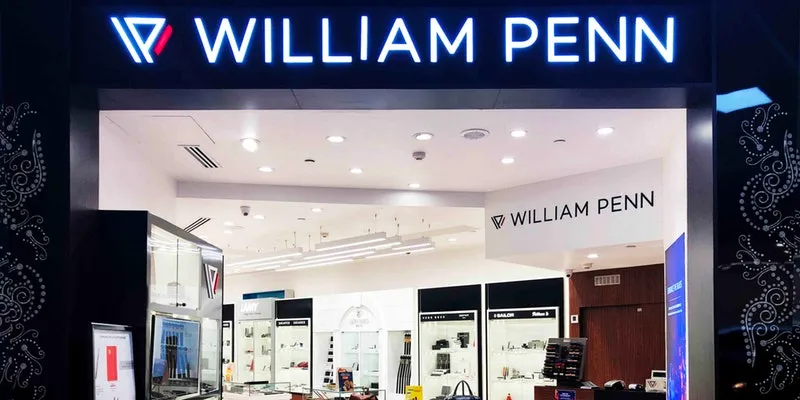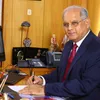From an investment of Rs 30 lakh, how Bengaluru-based William Penn has grown to Rs 100 Cr turnover
Launched as a word-class alternative to the neighbourhood stationery store, Bengaluru-based William Penn now has its own label and products, tie-ups with premium brands like Cross, Waterman, and Sheaffer, and a turnover of Rs 100 crore.
In 2002, Bengaluru got a new fancy address for a stationery store: William Penn. Nikhil Ranjan launched William Penn with the idea of bringing in a lifestyle-driven stationery store to India, one that provided the touch-and-feel element.
“Until then, a stationery store translated into small kirana-like stores, which didn’t have specific brands and premium appeal,” Nikhil says.
A mechanical engineer from National Engineering College, Mysore, Nikhil had by then been placed at IBM.
However, he soon realised that neither software engineering was his cup of tea, nor was a regular nine-to-five job. Setting up a stationery store came naturally to Nikhil whose father has a manufacturing setup for stationery in Mysuru, which was established in 1987.
But Nikhil wanted to do something different from the family business.
Started with an investment of Rs 30-Rs 35 lakh, William Penn now has a turnover of Rs 100 crore. It offers its own pen brand PennLine, and has tie-ups with premium brands like Cross, Waterman, and Sheaffer to name a few.

Nikhil Ranjan, Founder and Managing Director, William Penn.
Building the business from ground up
In the early days, Nikhil says the team was clueless on how to run a business. “We just knew there was an innate need for stationery and put things together, without even thinking of how the supply chain would work. What worked for us was that we were responding to what the customer wanted.”
“Initially, vendors supply to you only if you can guarantee certain volumes. And we can’t justify that. This is a challenge for any business,” Nikhil says.
He adds that getting the ‘yes’ from the vendors wasn’t a problem; the problem was after that.
The brand had now set up a complete distribution network and supply chain. But back then, the team had to start from scratch. Launched with seven people, William Penn is now a team of over 300 people.
Every brand was happy to have an inquiry and representation in India, but the price points and import duties surprised many. In early 2000s, setting up a supply chain was tough as export duties were extremely high - upwards of 70 percent.
“We were different. Brands found it welcoming that there was someone willing to pay that 70 percent duty and buy. Our margins were limited to 15 to 20 percent in the early days, but we were setting up a business and getting products customers wanted. Modern retail was picking up, malls had started emerging, and disposable income was rising,” Nikhil says.
The first brand that William Penn helped succeed was Pelican, a German brand.
“I remember meeting the representative at the Taj Mahal Hotel in Mumbai. He was most excited about staying at the Taj. He was the export manager at Pelican and was retiring. He heard from me, and possibly thought of it as his last chance to visit India. He was clear that I had to meet him there. This was in 2003,” Nikhil recalls.
After Pelican came on board, other brands slowly started joining.
Focusing on retail
For the first couple of years, the team focused on retail; it opened its first store at Koramangala in Bengaluru, and second store at Forum Mall in Bengaluru in 2004. Another external factor that helped in the growth of the business was the presence of e-mail, which helped the team reach out to different brands and vendors.
William Penn started becoming cash positive from the second year. It started with a revenue of Rs 2 crore.
In 2005, the team expanded to Mumbai to tap the residents’ huge spending power. By then, the company was also getting corporate orders, many of them from India’s commercial capital, and it made sense to open a store there.

The first William Penn store was opened in Bengaluru in 2002.
William Penn’s team was now marketing products in print and on radio. The hoardings ensured that malls received good footfalls.
“We got a good break in 2007 when we got an opportunity to open our store at the Hyderabad airport. It gave us a lot of visibility. It helped us get a store at the Delhi airport in 2010,” Nikhil says.
B2B and the William Penn label
While the company was building physical stores, the team started getting B2B orders from iGate and ING Vysya for writing instruments and stationery.
Physical stores may have been the primary source of revenue when Nikhil started the business, but today they contribute a little less than 50 percent of the overall revenue; the rest is courtesy B2B and other channels.
In 2015, the team decided to launched its own pen brand: PennLine.
Nikhil says that in early 2000s international brands did not have the Indian consumer in mind while making products. “We saw this as an opportunity and the Indian market was maturing,” he says.
By then, William Penn was making revenues of Rs 75 crore.
Dealing with the mobile phone threat
The advent of the mobile phone led many to worry that writing would soon be a thing of the past.
“This was the next phase of our business. It was 2016 and 2017; marketplaces were born and people started shopping online. While the sales and revenue didn’t drop, they started plateauing; growth wasn’t happening,” Nikhil says.
But establishing PennLine helped garner visibility on marketplaces like Amazon and Flipkart, and also add across channels. The team also decided to build its own brand of products, and went from a writing instrument-heavy player to even adding men’s accessories like belts and wallets.
“We thought of taking on the mobile phone. If you can’t beat it, why not join it? We looked at what was happening to writing and realised that it was here to stay. People were writing lesser but they were still writing. The largest use cases were minutes of meetings and things to do,” Nikhil says.

The more recent William Penn store sells pens, stationery, and accessories.
Innovating to spur growth
The team found the need for a one-notebook-fits-all solution and developed a five-subject notebook. This offering allows you to maintain multiple journals in one book. It allows you maintain indexes and has different formats; you can take notes on different formats, and even remove pages on the go. One notebook is priced at Rs 1,000, and refills are available at Rs 200.
This journal also has refills like Unplugged, which helps with digital detox, and offers different activities to do while away from the phone.
The PennLine pens are manufactured by vendors around the world, including in Germany, while the notebooks are manufactured by vendors across India.
“We came up with another a product – the Superbook, a notebook organiser with a charging cable, an in-built 8000 mph power bank, and other things. The charge on your phone is critical and this helps you charge on the go. The product is designed in-house and manufactured by vendors in India. Products like these are to help adapt to changing consumer needs,” Nikhil says.
The Superbook is priced at Rs 7,500. The Superbook products start from Rs 3,550.
Innovating has helped William Penn leap off the plateau and grow. Today, sales of notebooks, accessories, and tech products have crossed the sales of writing instruments. PennLine itself accounts for 25 percent of business revenues.
“We are a profitable and happy company, which gives us enough room to innovate and build world-class products. We already export to Bangladesh, the Middle East, Sri Lanka, and a few other countries. We are setting up our first store in Colombo’s Shangri La Mall on December 7,” Nikhil adds.
(Edited by Teja Lele Desai)











